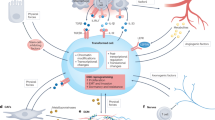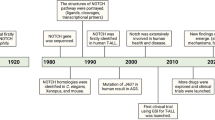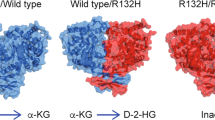Abstract
Background
Retinoblastoma is an intraocular cancer in children and infants. Despite all the available treatment options and high survival rates in children with retinoblastoma, exposure to secondary tumours in adulthood is one of the concerns that physicians face. In many cases, dysfunction of the RB1 gene is the main cause of secondary tumours due to retinoblastoma. Therefore, the aim of this study was to evaluate the incidence of other secondary tumours in children with retinoblastoma.
Methods
In this regard, we performed continuous and integrated bioinformatics analyses to find genes, protein products, and signal pathways involved in other cancers.
Results
1170 high-expression genes and 960 low-expression genes between non-invasive and invasive retinoblastoma were isolated. After examining the signal pathways, we observed bladder cancer and small cell lung cancer in the overexpressed genes. We also observed 5 cancers of endometriosis, prostate, non-small cell lung cancer, glioblastoma and renal cell carcinoma in low-expression genes. Based on the P-value index, non-small cell lung cancer, prostate and bladder cancers had the highest risk, and endometriosis cancer showed a lower probability of developing a secondary tumour in patients with retinoblastoma. In addition, the network between proteins also showed us that TP53, CDK2, SRC, MAPK1 proteins with high expression and JUN, HSP90AA1, and UBC proteins with low-expression play a significant role in candidate cancers.
Conclusion
Lastly, we used continuous bioinformatics analysis to show that seven cancers are strongly linked to retinoblastoma cancer. Of course, more research is needed to find the best way to care for children who have been treated for retinoblastoma.
This is a preview of subscription content, access via your institution
Access options
Subscribe to this journal
Receive 18 print issues and online access
$259.00 per year
only $14.39 per issue
Buy this article
- Purchase on Springer Link
- Instant access to full article PDF
Prices may be subject to local taxes which are calculated during checkout




Similar content being viewed by others
Data availability
All data generated or analysed during this study are included in this published article.
References
Ancona-Lezama D, Dalvin LA, Shields CL. Modern treatment of retinoblastoma: A 2020 review. Indian J Ophthalmol. 2020;68:2356.
Kaewkhaw R, Rojanaporn D. Retinoblastoma: etiology, modeling, and treatment. Cancers (Basel). 2020;12:2304.
Soliman S, Kletke S, Roelofs K, VandenHoven C, Mckeen L, Gallie B. Precision laser therapy for retinoblastoma. Expert Rev Ophthalmol. 2018;13:149–59.
Vempuluru VS, Jakati S, Kaliki S. Delayed metastasis in patients with intraocular retinoblastoma: A review of three cases. Eur J Ophthalmol. 2021;31:2042–7.
Tomar AS, Finger PT, Gallie B, Kivelä TT, Mallipatna A, Zhang C, et al. Global retinoblastoma treatment outcomes: Association with national income level. Ophthalmology. 2021;128:740–53.
Shields CL, Lally SE. Retinoblastoma, in: Ocul Oncol, Springer, 2019: pp. 91–99.
Chantada G, Schaiquevich P. Management of retinoblastoma in children: current status, pediatr. Drugs. (2015). https://doi.org/10.1007/s40272-015-0121-9.
Berry JL, Polski A, Cavenee WK, Dryja TP, Murphree AL, Gallie BL. The RB1 story: characterization and cloning of the first tumor suppressor gene. Genes (Basel). 2019;10:879.
Tutunchi S, Akhavan S, Bereimipour A, Hossein Ghaderian SM. Evaluation of important molecular pathways and candidate diagnostic biomarkers of noninvasive to invasive stages in gastric cancer by in silico analysis. J Oncol. 2021;2021:5571413.
Wu D, Rice CM, Wang X. Cancer bioinformatics: A new approach to systems clinical medicine. BMC Bioinformatics. 2012:13:71.
Cao M, Wang S, Zou J, Wang W. Bioinformatics analyses of retinoblastoma reveal the retinoblastoma progression subtypes. Bioinforma GENOMICS. 2020;1:1–17. https://doi.org/10.7717/peerj.8873.
Zeng Y, He T, Liu J, Li Z, Xie F, Chen C, et al. Bioinformatics analysis of multi-omics data identifying molecular biomarker candidates and epigenetically regulatory targets associated with retinoblastoma. Med (Baltim). 2020;0:234–41.
Huang J, Zhang L, Li Z, Lu X. Screening and identification of key biomarkers for retinoblastoma. Medicine (Baltimore). 2020;99:e19952.
Cho SJ, Kim JH, Baik SH, Sunwoo L, Bae YJ, Choi BS. Diagnostic performance of MRI of post-laminar optic nerve invasion detection in retinoblastoma: A systematic review and meta-analysis. Neuroradiology. 2021;63:499–509.
Gerrish A, Stone E, Clokie S, Ainsworth JR, Jenkinson H, McCalla M, et al. Non-invasive diagnosis of retinoblastoma using cell-free DNA from aqueous humour. Br J Ophthalmol. 2019;103:721–4.
Patel S, Vogel J, Bradley K, Chuba PJ, Buchsbaum J, Krasin MJ. Rare tumors: Retinoblastoma, nasopharyngeal cancer, and adrenocorticoid tumors. Pediatr Blood\Cancer. 2021;68:e28253.
Alzahem T, Alsarhani W, Albahlal A, Safieh LA, Aldahmash S. History and genetics of retinoblastoma, in: Retin. Present Futur., IntechOpen, 2019.
Woo KI, Harbour JW. Review of 676 second primary tumors in patients with retinoblastoma: association between age at onset and tumor type. Arch Ophthalmol. 2010;128:865–70.
Ketteler P, Hülsenbeck I, Frank M, Schmidt B, Jöckel K-H, Lohmann DR. The impact of RB1 genotype on incidence of second tumours in heritable retinoblastoma. Eur J Cancer. 2020;133:47–55.
Zuehlke AD, Beebe K, Neckers L, Prince T. Regulation and function of the human HSP90AA1 gene. Gene. 2015;570:8–16.
Xiao X, Wang W, Li Y, Yang D, Li X, Shen C, et al. HSP90AA1-mediated autophagy promotes drug resistance in osteosarcoma. J Exp \ Clin Cancer Res. 2018;37:1–13.
Xiao X, Wang W, Li X, Li Y, Yang D, Shen C, et al., MicroRNA-495 suppresses osteosarcoma invasion and migration by targeting HSP90AA1. Oncotarget. 2018;5.
Dong Z, Yang P, Qiu X, Liang S, Guan B, Yang H, et al. KCNQ1OT1 facilitates progression of non-small-cell lung carcinoma via modulating miRNA-27b-3p/HSP90AA1 axis. J Cell Physiol. 2019;234:11304–14.
Young M-J, Hsu K-C, Lin TE, Chang W-C, Hung J-J. The role of ubiquitin-specific peptidases in cancer progression. J Biomed Sci. 2019;26:1–14.
Chen X, Dou QP, Liu J, Tang D. Targeting ubiquitin—proteasome system with copper complexes for cancer therapy. Front Mol Biosci. 2021;8:116.
Chen X, Chen S, Jiang Z, Gong Q, Tang D, Luo Q, et al. Ubiquitination-related miRNA—mRNA interaction is a potential mechanism in the progression of retinoblastoma. Investig Ophthalmol\Vis Sci. 2021;62:3.
del Mar Maldonado M, Dharmawardhane S. Targeting rac and Cdc42 GTPases in cancer. Cancer Res. 2018;78:3101–11.
Chernichenko N, Omelchenko T, Deborde S, Bakst RL, He S, Chen C-H, et al. Cdc42 mediates cancer cell chemotaxis in perineural invasion. Mol Cancer Res. 2020;18:913–25.
Zou S, Tong Q, Liu B, Huang W, Tian Y, Fu X. Targeting STAT3 in cancer immunotherapy. Mol Cancer. 2020;19:1–19.
Gharibi T, Babaloo Z, Hosseini A, Abdollahpour-Alitappeh M, Hashemi V, Marofi F, et al. Targeting STAT3 in cancer and autoimmune diseases. Eur J Pharmacol. 2020;878:173107.
Liu S, Zhang X, Hu C, Wang Y, Xu C. miR-29a inhibits human retinoblastoma progression by targeting STAT3 Corrigendum in/10.3892/or. 2021.8126. Oncol Rep. 2018;39:739–46.
Wang L, Zhang Y, Xin X. Long non-coding RNA MALAT1 aggravates human retinoblastoma by sponging miR-20b-5p to upregulate STAT3. Pathol Pract. 2020;216:152977.
Ono M, Takeshima M, Nishi A, Higuchi T, Nakano S. Genistein suppresses v-Src-driven proliferative activity by arresting the cell-cycle at G2/M through increasing p21 level in Src-activated human gallbladder carcinoma cells. Nutr Cancer. 2021;73:1471–9.
Liu H, Bi J, Dong W, Yang M, Shi J, Jiang N, et al. Invasion-related circular RNA circFNDC3B inhibits bladder cancer progression through the miR-1178-3p/G3BP2/SRC/FAK axis. Mol Cancer. 2018;17:1–19.
Li M-Y, Peng W-H, Wu C-H, Chang Y-M, Lin Y-L, Chang G-D, et al. PTPN3 suppresses lung cancer cell invasiveness by counteracting Src-mediated DAAM1 activation and actin polymerization. Oncogene. 2019;38:7002–16.
Watt AC, Cejas P, DeCristo MJ, Metzger-Filho O, Lam EYN, Qiu X, et al. CDK4/6 inhibition reprograms the breast cancer enhancer landscape by stimulating AP-1 transcriptional activity. Nat Cancer. 2021;2:34–48.
Zhang Z, Li J, Ou Y, Yang G, Deng K, Wang Q, et al. CDK4/6 inhibition blocks cancer metastasis through a USP51-ZEB1-dependent deubiquitination mechanism. Signal Transduct Target Ther. 2020;5:1–13.
Gener P, Rafael D, Seras-Franzoso J, Perez A, Alamo Pindado L, Casas G, et al. Pivotal role of AKT2 during dynamic phenotypic change of breast cancer stem cells. Cancers (Basel). 2019;11:1058.
Liu T, Zhu J, Du W, Ning W, Zhang Y, Zeng Y, et al. AKT2 drives cancer progression and is negatively modulated by miR-124 in human lung adenocarcinoma. Respir Res. 2020;21:1–15.
Bertacchini J, Mediani L, Beretti F, Guida M, Ghalali A, Brugnoli F, et al. Clusterin enhances AKT2-mediated motility of normal and cancer prostate cells through a PTEN and PHLPP1 circuit. J Cell Physiol. 2019;234:11188–99.
Acknowledgements
We thank all colleagues in the core facilities for their support.
Author information
Authors and Affiliations
Contributions
All authors Participated in study design, data collection and evaluation, drafting and statistical analysis; Contributed extensively in interpretation of the data and the conclusion and figure design. All authors performed editing and approving the final version of this paper for submission, also participated in the finalisation of the manuscript and approved the final draft.
Corresponding author
Ethics declarations
Competing interests
This study was supported by a part of grant of Tehran University of medical science [Projects Code: 99-1-115-47842; 1400-2-259-54530].
Additional information
Publisher’s note Springer Nature remains neutral with regard to jurisdictional claims in published maps and institutional affiliations.
Supplementary information
Rights and permissions
Springer Nature or its licensor (e.g. a society or other partner) holds exclusive rights to this article under a publishing agreement with the author(s) or other rightsholder(s); author self-archiving of the accepted manuscript version of this article is solely governed by the terms of such publishing agreement and applicable law.
About this article
Cite this article
Sadeghi, R., Pirankuraim, H., Javanshir, S.T. et al. Risk of secondary tumours in patients with non-metastatic and metastatic human retinoblastoma. Eye 37, 2327–2334 (2023). https://doi.org/10.1038/s41433-022-02345-3
Received:
Revised:
Accepted:
Published:
Issue Date:
DOI: https://doi.org/10.1038/s41433-022-02345-3



